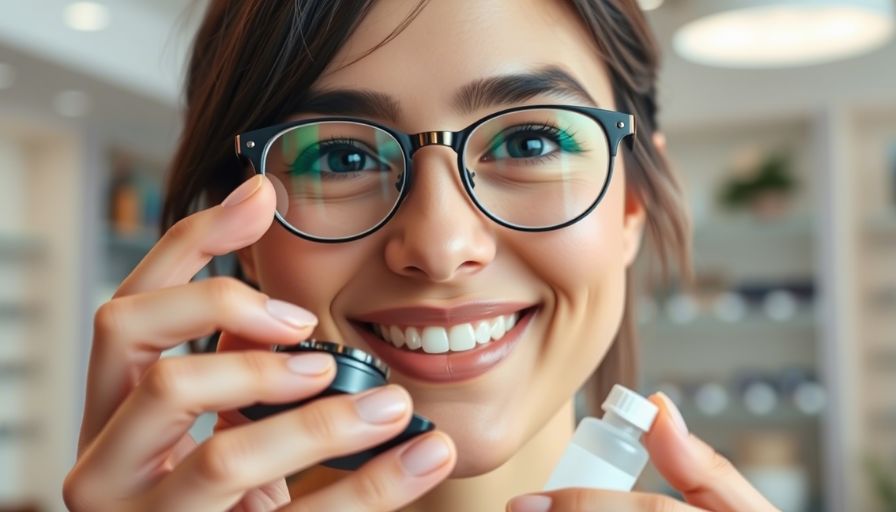Finding the best contact lens is essential for anyone seeking clear vision without the inconvenience of glasses. Contact lenses have revolutionized the way millions of people correct their vision, offering freedom, comfort, and aesthetic appeal. However, with a wide variety of lenses available, choosing the right one can be overwhelming. Comfort is often the top priority, alongside vision correction, and understanding the options can help you make an informed decision.
In this guide, we’ll explore the best contact lens options designed to provide comfortable vision, highlighting factors such as material, design, and care that contribute to an optimal experience.
Why Comfort Matters in Contact Lenses
Comfort is a crucial factor when it comes to contact lenses. Unlike glasses that sit on the nose, contact lenses rest directly on the eye’s surface. A lens that doesn’t fit well or irritates the eye can cause discomfort, dryness, and even damage to the cornea. The best contact lens will feel almost invisible once placed, allowing you to wear them for extended periods without irritation.
Modern advancements in lens technology have dramatically improved comfort levels, with many lenses designed to maintain moisture, reduce deposits, and mimic the natural eye environment.
Types of Contact Lenses for Comfortable Vision
The best contact lens varies from person to person depending on lifestyle, vision needs, and eye sensitivity. Here are some popular types designed to maximize comfort:
Soft Contact Lenses
Soft lenses are made from flexible, water-containing plastics called hydrogels or silicone hydrogels. Their softness allows them to conform easily to the eye’s surface, making them highly comfortable for most wearers. Silicone hydrogel lenses, in particular, allow more oxygen to pass through to the cornea, enhancing eye health and comfort.
Soft lenses are ideal for daily wear and come in various forms, including daily disposables, bi-weekly, or monthly lenses, which offer different levels of convenience and hygiene.
Daily Disposable Lenses
Daily disposables are considered among the best contact lens options for comfort because they are used once and discarded. This reduces the risk of protein buildup, allergens, and contaminants that can cause discomfort and infections. For people with sensitive eyes or allergies, daily disposables provide a fresh, clean lens every day, minimizing irritation.
Toric Lenses for Astigmatism
People with astigmatism require specialized lenses that correct the uneven curvature of the cornea. Toric lenses are designed to stay stable on the eye and provide sharp vision without compromising comfort. Modern toric lenses use advanced materials and designs to maintain moisture and reduce lens movement, which enhances comfort for wearers.
Multifocal Contact Lenses
For those who need correction for both near and far vision, multifocal lenses are an excellent option. The best contact lens in this category balances multiple prescriptions in one lens without causing discomfort or blurriness. These lenses are crafted to provide smooth transitions between different focal points, maintaining comfort throughout the day.
Rigid Gas Permeable (RGP) Lenses
Although not as soft as hydrogel lenses, RGP lenses offer superior vision quality and durability. They allow maximum oxygen flow, which can be healthier for the eyes. While they may require a short adjustment period, many users find them comfortable after proper fitting. RGP lenses are especially beneficial for complex prescriptions and irregular corneas.
Factors Influencing Contact Lens Comfort
Several factors beyond lens type influence how comfortable a contact lens feels:
Material and Oxygen Permeability
The best contact lens is made from materials that allow sufficient oxygen to reach the cornea. Oxygen permeability is essential for maintaining eye health and preventing dryness and irritation. Silicone hydrogel lenses have become popular for this reason, offering better breathability compared to traditional hydrogels.
Lens Design and Fit
A well-fitted lens moves minimally on the eye and doesn’t cause friction against the eyelid. Custom fitting by an eye care professional ensures that the lens matches the curvature and size of your eye, greatly improving comfort and reducing the risk of complications.
Moisture Retention
Lenses that retain moisture or have surface treatments to reduce dryness tend to be more comfortable, especially in environments with air conditioning or during long hours of wear. Some lenses incorporate wetting agents that keep the lens hydrated throughout the day.
Lens Care and Hygiene
Proper cleaning and handling of reusable lenses affect comfort significantly. Deposits from tears, dust, and makeup can accumulate on the lens surface, causing irritation. Following recommended cleaning routines with suitable solutions maintains lens clarity and comfort.
The Future of Contact Lens Comfort
Innovation in contact lens technology continues to focus on enhancing comfort and health. Emerging lenses offer features such as smart moisture retention, UV protection, and even blue light filtering to protect against digital eye strain. As research advances, the best contact lens options will become even more tailored to individual needs, delivering seamless comfort and vision correction.
In summary, the best contact lens for comfortable vision is one that fits well, provides ample oxygen to the eyes, maintains moisture, and suits your unique lifestyle and vision needs. By exploring the variety of lens types and focusing on comfort-enhancing features, you can enjoy clear, comfortable vision every day. Partnering with experienced eye care professionals ensures you receive the best advice and fitting, making your contact lens experience both safe and enjoyable.
